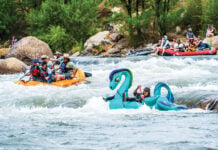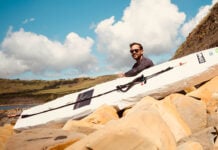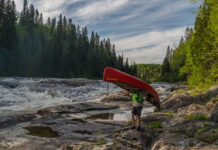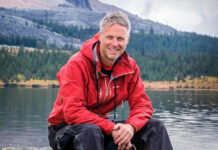Haley Daniels has spent half of her life training for one race. A race that, up until this year, didn’t exist.
The 30-year-old Canadian athlete has been competing in the national canoe slalom circuit for the past 13 years, fueled by a dream of someday stepping onto the Olympic podium. Seven world championships and multiple podium placements later, and with the 2021 Tokyo Olympics just around the corner, Haley’s dream is finally tangible.
With almost no funding, no access to female-specific boats and—most importantly—no category in the Olympics for women in canoe slalom, Haley’s journey has been painstakingly real. Working part-time jobs, writing sponsorship proposals and organizing fundraiser events have all been part of a roster of extracurricular activities integral to funding her journey. Balanced alongside over 40 hours of training per week, of course.
Her efforts have not gone unrewarded. At the 2021 Olympic Games this July, she and her dad, Kimberly Daniels, are set to make history: Haley as part of a pioneering cohort of female canoeists in the Olympics, and her dad as the first recorded transgender official on the Olympic judging panel.
View this post on Instagram
The fight for gender equity in C1
Haley’s philosophy is: If you’re not turning heads, you’re not making a difference. “It was a catchy story when I first started advocating for women’s C1 more than half a decade ago. A few news outlets picked it up,” she said. “I had no access to funding, no athlete resources I could apply for. I was paying for it out of pocket.” It was up to the International Canoe Federation (ICF) to identify women’s canoe slalom as an Olympic sport before government funding could begin.
Men’s Canoe Slalom was first introduced into the Olympic Games back in 1972. Alongside men’s C1, there were categories for men’s C2 (tandem canoeing), and men’s and women’s K1 (kayaking). Now, almost five decades later, the women’s canoeing event will finally make its Olympic debut.
Why did it take so long? Each sport in the Olympics is awarded a quota of medals. For women’s C1 to have its own category, it needed to take the place of another. So, in a bid to reach the International Olympic Committee’s (IOC) gender equity criteria, men’s C2 was dropped from the lineup.
For Haley, the decision should have come sooner. “It wasn’t a case of not being ready. We were ready for London [2012]. We were ready for Rio [2016]. The International Canoe Federation wasn’t ready for us.” More funding for women in C1 will encourage and facilitate a larger cohort of Olympic-level female competitors, she said. But it was up to the ICF to take the first step.
“big organizations are resistant to change. Introducing a sport to the Olympics takes time, money and work. They weren’t willing to make that change or speed up the process.”
– Haley Daniels
Some of the former Olympic title holders in the C2 category have since spoken out about the ICF’s decision to remove their category. Peter Skantar, a former gold medalist from Slovakia, publicly commented that the decision from the ICF was, “like a bad joke.” For him, the exchange of C2 for women’s C1 doesn’t bring any “new spirit” to the sport.
Haley believes there’s still a long way to go when it comes to unearthing the deep-rooted stigma associated with women in canoe slalom. “People were literally laughing at us at the training courses when we first got on the water,” she recalled. Without enough female representation in the field, women are viewed as unusual and unworthy competitors by some.
Making waves in the slalom scene
Haley’s impact on the slalom scene is having a ripple effect. Her dad, Kimberly Daniels (formerly Duncan Daniels), is part of the International Olympic Committee and will blaze a trail as the first openly transgender judge on the Olympic judging panel at the Tokyo games.
After coming out to her family, Kimberly initially decided to stay as “Duncan” for the course of the Tokyo Olympics. “We didn’t want that to be the focus of my journey or put any added pressure on me,” Haley recalled. But the pandemic delayed the Tokyo Olympics and altered their timelines. Waiting another year was not in the cards.
So, last year, Duncan became Kimberly full-time. “I told my dad, ‘Dad, I want to scream this off the rooftops with you. Let’s do this together, proudly.’ During Pride Week 2020, we came out,” Haley said.
The announcement was met with little resistance from the slalom community. “It helped knowing we had 100 percent support from Canadian Olympic Committee. It was no longer a secret we had to hide. I know there’s stigma against trans people, so I wanted to be as public about this as possible.” As for her peers, she believes most are okay with it but, “they don’t want to talk about it.” It’s these uncomfortable silences that urged Haley to spark more conversation.
Going for gold: leaving a legacy
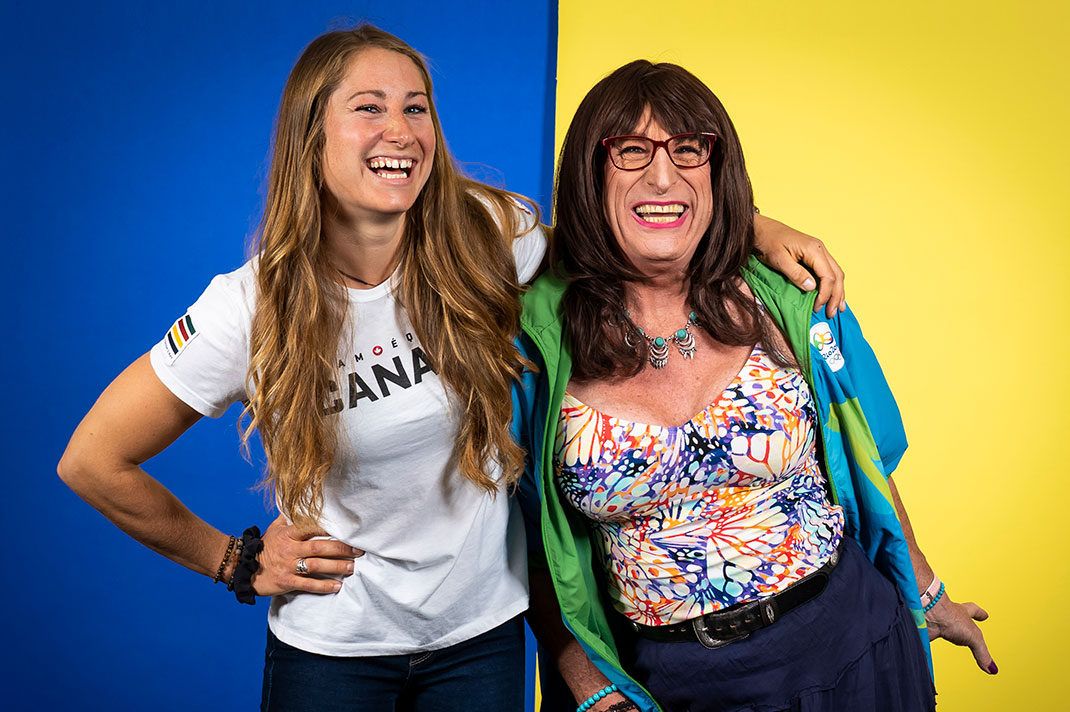
Haley’s journey doesn’t end with competing, nor does it end at the podium. Her purpose has shifted. Her social media platforms have become a space where she advocates for trans rights and awareness—specifically in sport.
“It’s a no-brainer for me; I’m happy to advocate. There’s a lack of education on how to respect people in the trans community, even when talking about pronoun usage. We need to create tools and places where people can educate themselves,” she said.
“Sometimes, the biggest impact comes from the smallest conversations,” she added. “If you see something you know is not okay, say something. Don’t let it slide. It’s not a fight. It’s about returning to those uncomfortable situations and standing up for what you believe in.”
View this post on Instagram
It’s this attitude that has made her an Olympic contender in a category that hasn’t existed until now. “We have equal opportunity, but we also have a past that needs to be rectified. There’s a legacy that’s still being written for women in sport. And for trans people in sport.”
On May 29, 2021, Haley Daniels confirmed her spot on Team Canada and will be part of the first cohort of women canoeists to compete in the games.
Haley Daniels Tokyo-bound. | Photo: Dave Holland
This article was first published in Paddling Magazine Issue 64. Subscribe to Paddling Magazine’s print and digital editions here, or download the Paddling Magazine app and browse the digital archives here.




